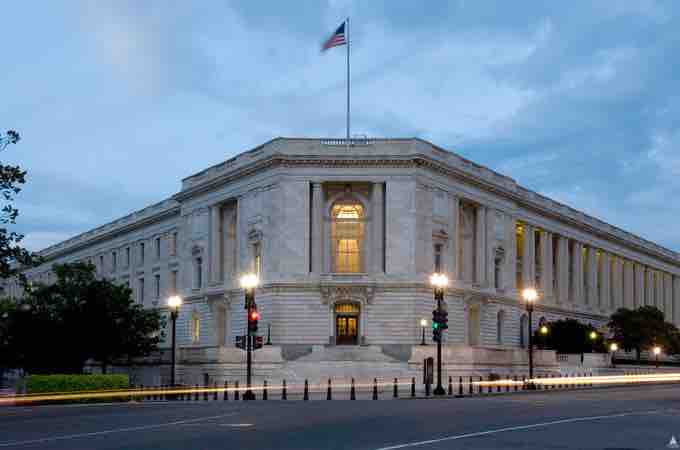Congressional staff are employees of the United States Congress or individual members of Congress. The various types of congressional staff are as follows: personal staff, who work for individual members of Congress; committee staff, who serve either the majority or minority on congressional committees; leadership staff, who work for the speaker, majority and minority leaders, and the majority and minority whips; institutional staff, who include the majority and minority party floor staff and non-partisan staff; and the support agency staff, who are the non-partisan employees of the Congressional Research Service (CRS), Congressional Budget Office (CBO), and Government Accountability Office (GAO).

Russell Senate Office Building
The Russell Senate Office Building houses several Congressional staff members, including those on the United States Senate Committees on Armed Services, Rules and Administration, Veterans' Affairs, and others.
In the year 2000, there were approximately 11,692 personal staff, 2,492 committee staff, 274 leadership staff, 5,034 institutional staff, 747 CRS employees, and 232 CBO employees, and 3,500 GAO employees. Every Representative hired 14 staff members, while the average Senator hired 34. Representatives had a limit of 18 full-time and four part-time staffers, while Senators had no limit on staff.
Each congressional committee has a staff of varying size. Appropriations for committee staff are made in annual legislative appropriations bills. Majority and minority members hire their own staff, with the exception of two committees in each house: the Committee on Standards of Official Conduct and the Permanent Select Committee on Intelligence in the House, and the Select Committee on Ethics and the Senate Select Committee on Intelligence in the Senate. These committees have a single staff.
In 2000, House committees had an average of 68 staff, and Senate committees an average of 46. Committee staff includes staff directors, committee counsel, committee investigators, press secretaries, chief clerks and office managers, schedulers, documents clerks, and assistants.